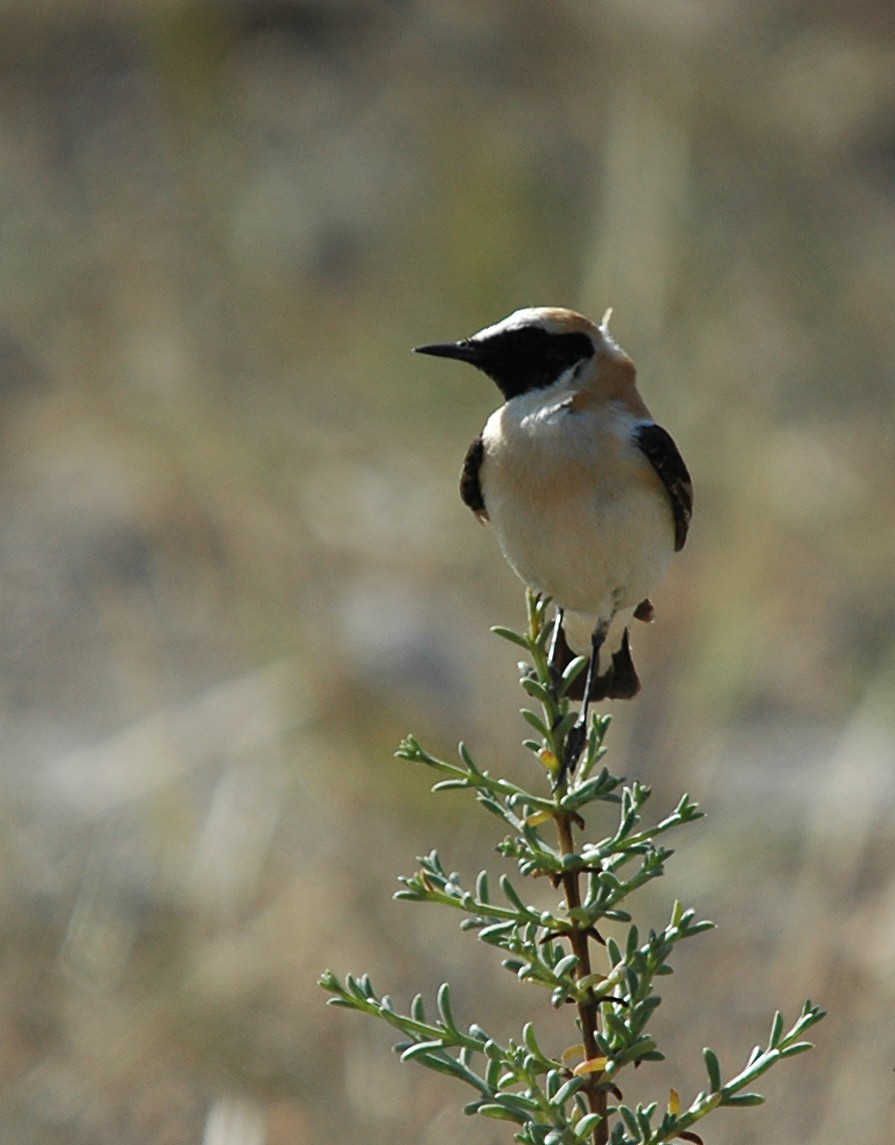Western Black-eared Wheatear
A species of Wheatears Scientific name : Oenanthe hispanica Genus : Wheatears
Western Black-eared Wheatear, A species of Wheatears
Botanical name: Oenanthe hispanica
Genus: Wheatears
Content
Description General Info
 Photo By Vince Smith , used under CC-BY-SA-2.0 /Cropped and compressed from original
Photo By Vince Smith , used under CC-BY-SA-2.0 /Cropped and compressed from original Description
The western black-eared wheatear (Oenanthe hispanica) is a wheatear, a small migratory passerine bird that was formerly classed as a member of the thrush family Turdidae, but is now considered to be an Old World flycatcher (family Muscicapidae). It was formerly (and still is by some authorities) considered conspecific with the eastern black-eared wheatear. The breeding male has the forehead and crown white or nearly white, the mantle buff, and the wings blacker than those of the northern wheatear. The underparts are white tinged with buff. The back, upper tail coverts and most of the tail are white. A black mask extends from the ear coverts to the bill. The throat can be either black or white. In autumn and winter the head and mantle are distinctly buff, as are the underparts (including the throat in non-black-throated individuals), but the buff varies in intensity. Except for the central pair, the tail feathers are much whiter than in the northern wheatear, the white on the inner web often extending to the tip. The female is a browner bird, but has the characteristic white lower back, and her seasonal changes are less marked. The male western black-eared wheatear can be distinguished from the male eastern black-eared wheatear by its more buff-tinged upperparts, giving it a less distinctly black-and-white appearance than the latter species, as well as having the black of the mask stopping at the base of the bill rather than extending slightly above. Black-throated individuals of this species have less black on the throat and face than on the eastern birds, and the black generally terminates less abruptly. Females of this species differ from their eastern counterparts in being warmer brown overall. 
Size
16 cm
Colors
Brown
Black
Bronze
Gray
White
Life Expectancy
5 years
Nest Placement
Ground
Feeding Habits
Western Black-eared Wheatear primarily feeds on invertebrates, with a diet including fruits and seeds. It forages on the ground, exhibiting agility while hunting. Western Black-eared Wheatear possesses unique dietary adaptations for consuming varied prey items.
Habitat
The western Black-eared Wheatear occupies arid, warm regions with rocky and scrubby terrain, including open woodlands and mixed shrublands with olives and pistachios. Thriving in conditions with sparse vegetation and bare ground, it is adaptable to varied vegetation densities. The species breeds up to 1200 m elevation, and during African winters, it migrates to wadis, oases, and agricultural landscapes.
Dite type
Insectivorous
General Info
Feeding Habits
Bird food type
Sounds
Song
Recording location: Portugal
Species Status
Not globally threatened.
Scientific Classification
Phylum
Chordates Class
Birds Order
Perching birds Family
Old world flycatchers Genus
Wheatears Species
Western Black-eared Wheatear